Hudson Yards NYC: Everything to Know About Visiting, Shopping, and Dining at the Megadevelopment
When the idea for Hudson Yards NYC was conceived nearly two decades ago, it was viewed by developers and city agencies alike as Manhattan’s Manifest Destiny. “In a place where dreams and ambitions are limitless, land is not,” New York’s Department of City Planning wrote. “There is one last frontier available in Manhattan—Hudson Yards.”
That “last frontier” quickly became “Tomorrow’s City Today,” as the development’s website touts. Hudson Yards is the largest development in United States history, a grove of crystalline skyscrapers that will one day host an estimated 55,752 New Yorkers daily.
In March 2019, New York City's most talked-about development celebrated its official debut. (Well, sort of; there is a second phase in the works.) With a growing deluge of media coverage and a series of staggered openings in the months to come, you can be forgiven for being confused. Here’s what you need to know.
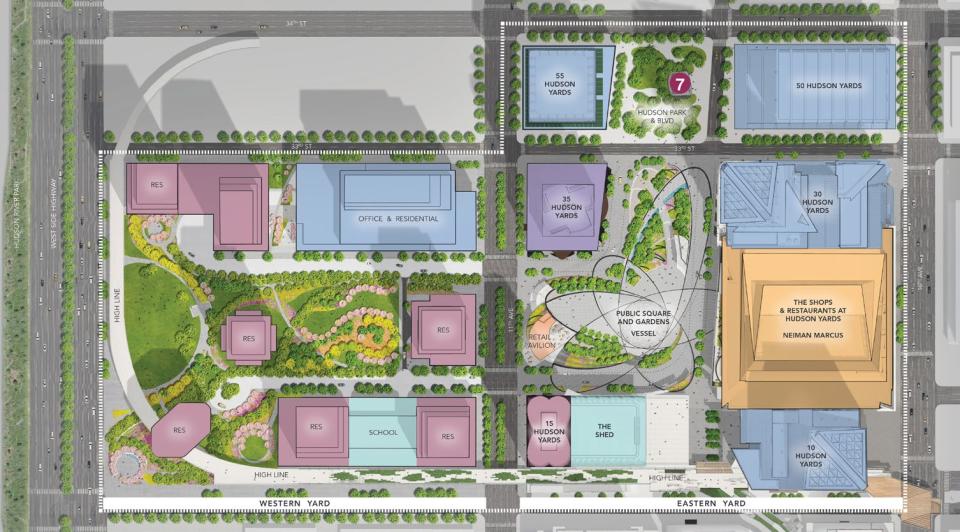
HudsonYardsOpening7
What is Hudson Yards NYC?
Hudson Yards is a 28-acre mixed-use development on Manhattan’s far West Side, bound by 34th and 30th street to the north and south, and by Tenth Avenue and the West Side Highway to the east and west. The development is unfolding in two parts. The first phase, Eastern Yard, is home to eight new buildings, including residential and commercial skyscrapers, public gardens, a massive shopping mall, and the Shed cultural center. Though specific design details have yet to be revealed, Western Yard will include additional residential, office, and retail space, as well as an elementary school. When both phases are completed, in 2025, the development will encompass more than 18 million gross square feet of built space, with nearly 14 additional acres of open public space.
Why is it such a big deal?
Hudson Yards is the biggest private real-estate development in U.S. history. The last development of this magnitude in New York was Rockefeller Center, completed 80 years ago. Once completed, the site’s developers say, it will contribute some $19 billion annually to New York City’s GDP and generate more than $500 million in city tax revenue. It is also expected to host more than 55,752 workers on a daily basis. Even if you don’t live in New York, pay attention: Hudson Yards is seen as a cutting-edge model for the future of so-called smart cities, i.e. those that leverage data to monitor and manage urban areas.
How did New York come up with the idea to develop Hudson Yards?
Though proposals for this parcel of land go back decades, surprisingly, much of the groundwork for today’s new neighborhood is the result of New York’s failed bid to host the 2012 Olympic games. Though the effort (and a proposed West Side Stadium) was rejected in 2005, it catalyzed rezoning and the expansion of the 7 subway line. Tishman Speyer won a bid to redevelop the area in 2008, but that petered out as a result of the recession. The project was picked up by Related Companies in late 2009, which later formed a joint venture with Oxford Properties Group.
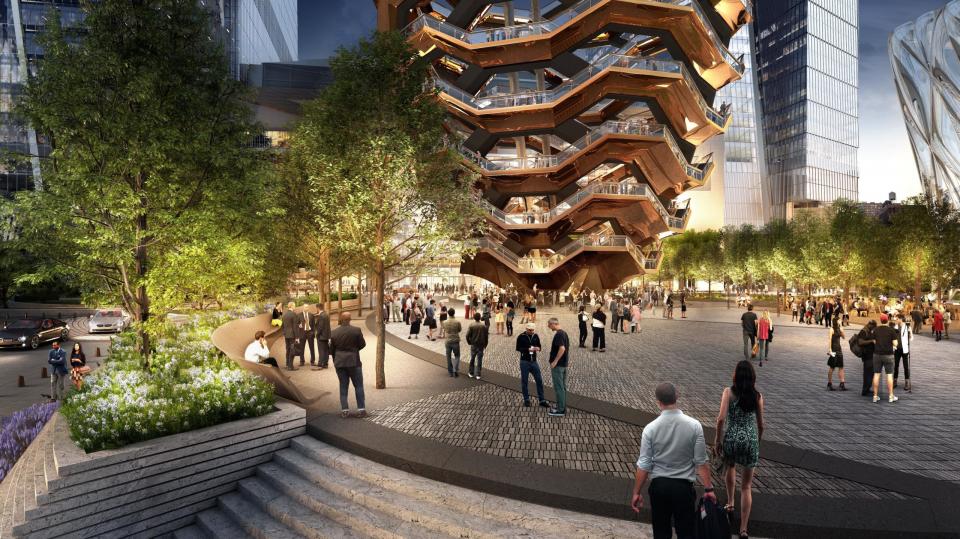
HudsonYardsOpening11
Who’s the developer behind the Hudson Yards?
Hudson Yards is developed by Related Companies (which developed New York’s Time Warner Center, and counts Equinox plus over $50 billion in real-estate assets in its portfolio) with Oxford Properties Group. Stephen Ross, Related’s chairman, has been hailed as a “Robert Moses for our age.”
How much did it cost to develop the Hudson Yards?
Construction costs have been estimated at $2 billion. According to a New York Times story that cited data from researchers at the New School, the development earned some $6 billion in tax breaks and other government incentives.
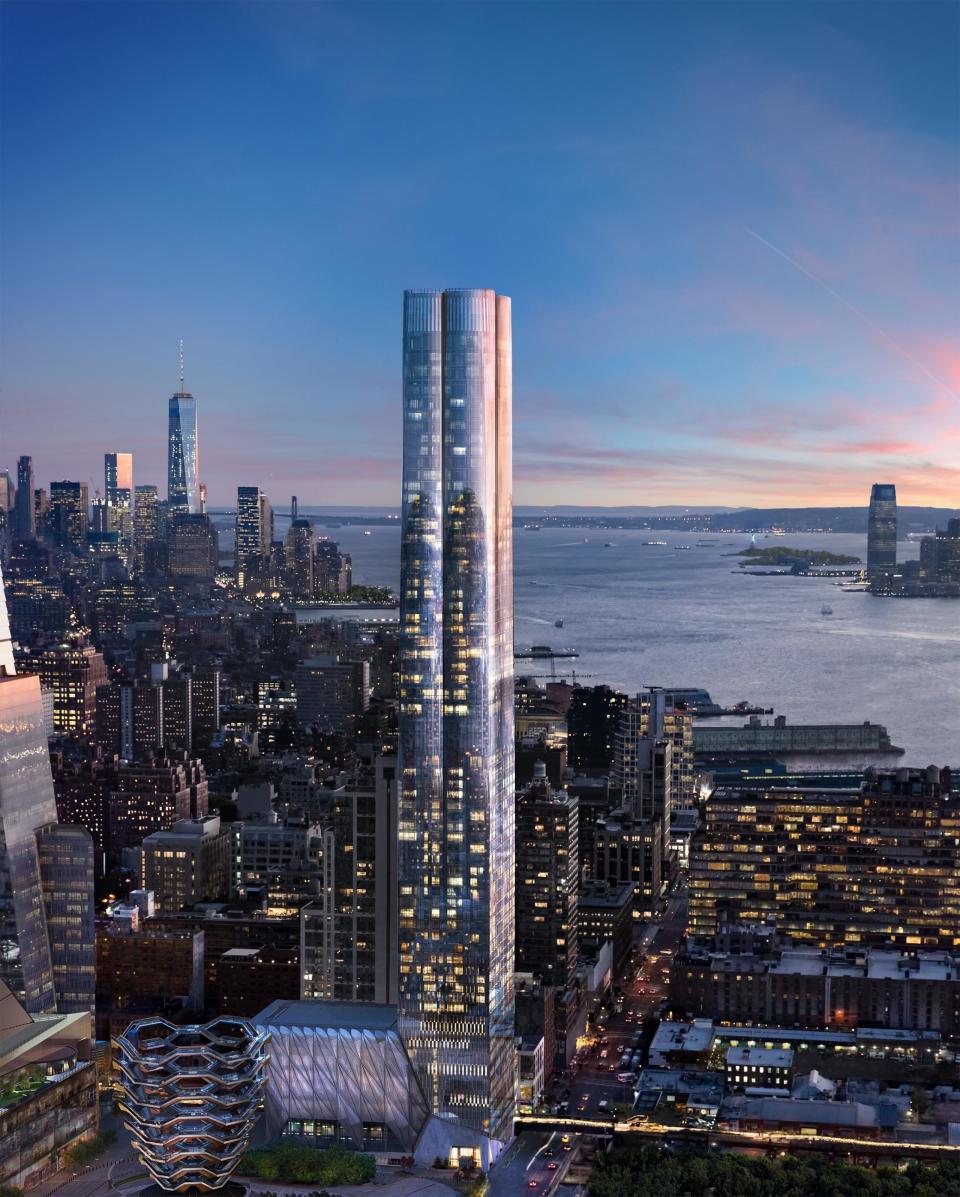
HudsonYardsOpening2
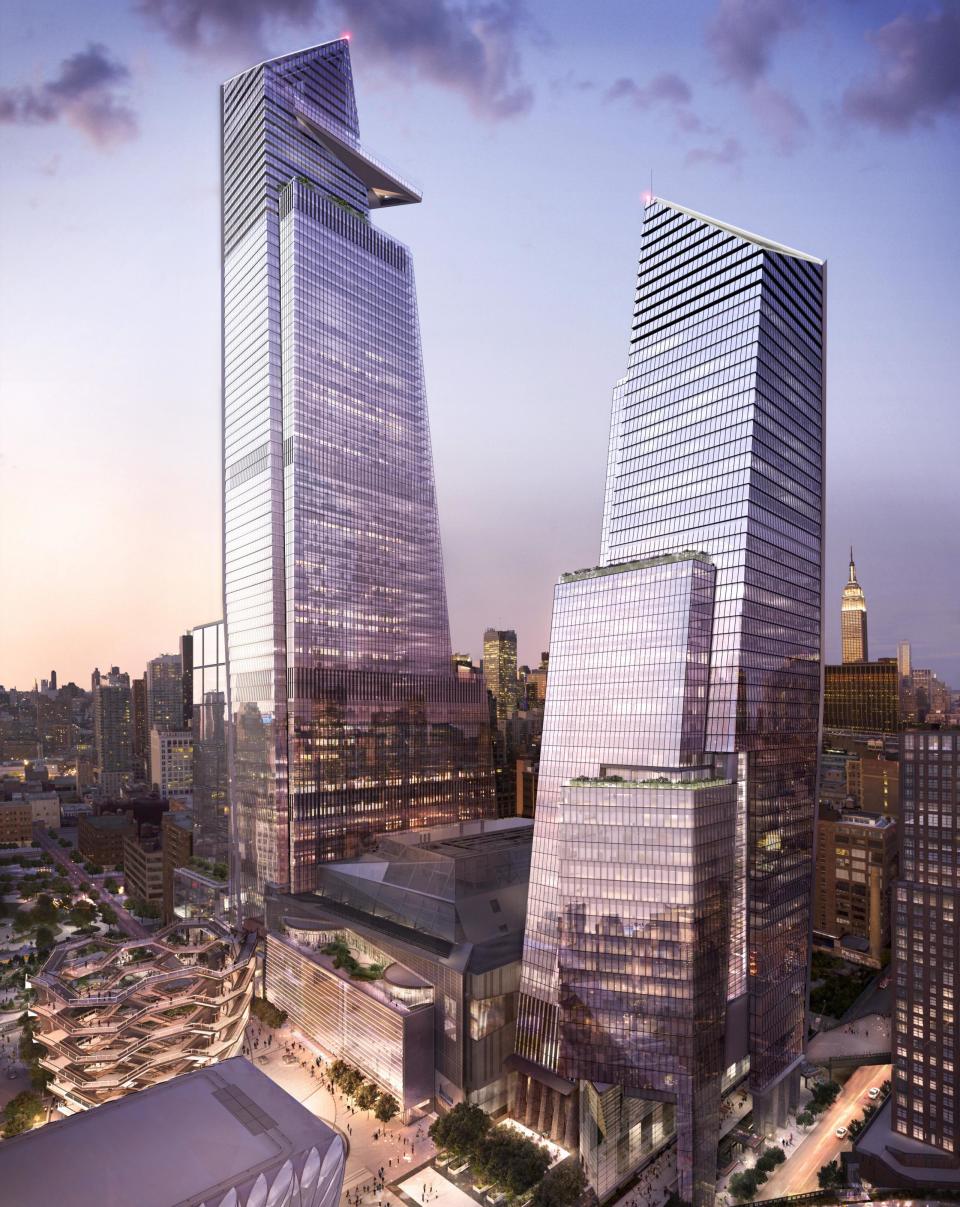
HudsonYardsOpening
What big design names are involved with the Hudson Yards?
Hudson Yards is home to projects by a bevy of big-name architects. The primary player is arguably KPF, which oversaw the development’s master plan and tower designs for 10, 30, and 55 Hudson Yards. Diller Scofidio + Renfro and Rockwell Group are also a major force in the development, with the design of both 15 Hudson Yards and the Shed. British designer Thomas Heatherwick oversaw the design of the Escher-like Vessel sculpture, while Nelson Byrd Woltz oversaw the landscape design of the main square. Other designs come from David M. Childs of SOM and interior designer Tony Ingrao (35 Hudson Yards), Foster + Partners (50 Hudson Yards), and Elkus Manfredi Architects (the shops and restaurants).
What was there before?
The area was dominated by rail yards. In fact, Hudson Yards had to be constructed above 30 active Long Island Rail Road tracks, New Jersey Transit and Amtrak passageways, as well as the Gateway Tunnel. To do this, engineers from Thornton Tomasetti, Langan, and Arup devised a ten-acre platform to support the development. This ultra-complex platform (which includes special ventilation, cooling, stormwater retention, and plant-friendly “smart soil”) weighs more than 35,000 tons and uses more than 25,000 tons of steel.
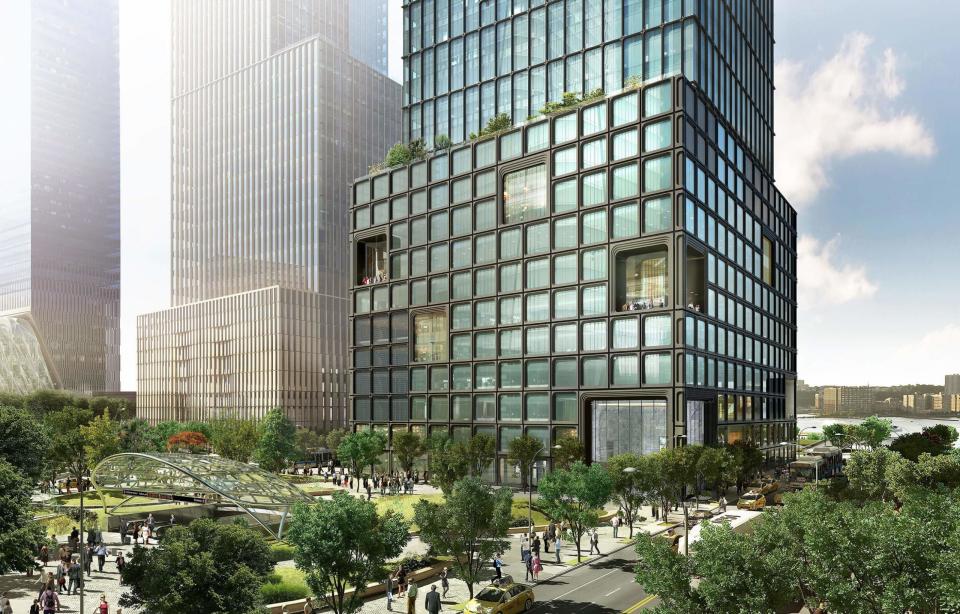
HudsonYardsOpening6
When did Hudson Yards NYC open?
10 Hudson Yards opened in 2016 and became the new home for Coach, L’Oreal, VaynerMedia, Alphabet’s Sidewalk Labs, the Boston Consulting Group, and others. Residents began moving into 15 Hudson Yards in February. Office tenants began moving into 55 Hudson Yards in 2018.
March 15, 2019 was the development’s grand opening, and at that time the shops (including Neiman Marcus, Cartier, and Roles), restaurants, and public plaza debuted, as well as Thomas Heatherwick's vertiginous Vessel sculpture.
How do you get to the Hudson Yards?
You can take the 7 subway line to the 34th St. Hudson Yards station. Or, you can stroll along the High Line, which traces the development’s southern edge and defines the site’s western boundary. For more novel forms of transit, you can take the ferry, or—if you are so inclined—a helicopter to a nearby heliport.
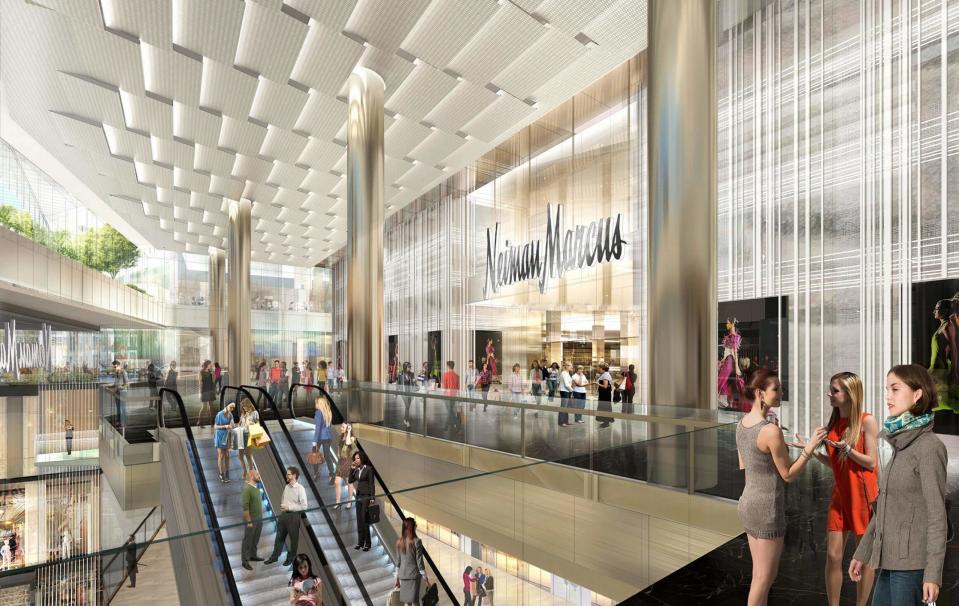
HudsonYardsOpening10
What can you do at the Hudson Yards?
Though the office buildings and residences are obviously open to tenants only, Hudson Yards is home to 14 acres of publicly accessible space brimming with entertainment.
The Shed: Dazzle Your Senses with World-Class Art
The Shed is an arts center with gallery spaces, an artists' lab, and rehearsal spaces. It's also home to The McCourt—a large theater that can seat an audience of more than 1200. The Shed works with artists across every discipline. In 2019, Icelandic artist Björk held a concert series at the Shed. Michael Bay also held the premiere for his film Underground 6 at The Shed.
Equinox Hotel: Stay Over in Style
Out-of-towners can stay over (and potentially score knockout abs) at the first-ever Equinox Hotel at 35 Hudson Yards.
The Edge: See the City Like You've Never See It
Visitors are able to take in dizzying views at Edge, the highest outdoor observation deck in the Western Hemisphere, jutting from 30 Hudson Yards. The Edge features a glass bottom and provides 360-degree views of the city.
The Vessel: Climb Sky-High
The Vessel is the veritable center of the Hudson Yards. This interactive sculpture is meant to be climbed. Visitors can ascend 150 feet via seemingly endless staircases. There are 80 landings within the sculpture. It's an experience you have to try at least once if you're at the Hudson Yards.
Dine at the Hudson Yards Restaurants
Hudson Yards is a veritable cornucopia of star chefs and dining venues. Diners can indulge in modern British cuisine at D&D London’s Queensyard, or (for a more fast-casual option) nosh on fried chicken at David Chang’s Fuku. In addition to Fuku and Queensyard, you can also dine Electric Lemon, Estiatorio Milos, Hudson Yards Grill, Mercado Little Spain, Momofuku, and Teak Tea Room.
Shop at the Hudson Yards Mall
The Hudson Yards mall spans more than 700,000 square feet and is home to more than 70 luxury retailers, including:
AG Adriano Goldschied
Aritzia
Atelier Cologne
Athleta
Avant Gallery
B8TA
Banana Republic
Beyond the Edge
Brooks Brothers
Camp
Carmen Sol
Cartier
Coach
Cremieux
Dior
Dunhill
Faherty
Fendi
Forty Five Ten
Frankie Colab
H&M
Jo Malone London
Kate Spade
Kenzo
Kiehl's
Levi's
Lovepop
Lululemon
M. Gemi
Mack Weldon
Madewell
Marli New York
Milk & Honey Babies
Molton Brown
Muji
M·A·C Cosmetics
Naadam
Origins
Pandora
Panerai
Patek Philippe
Piaget
Piq
Ray-Ban
Rhone
Rolex
Rudsak
Sally Hershberger Hy Salon
Scanlan Theodore
Sephora
Stance
Stuart Weitaman
Studs
Suit Supply
Sundays
The Body Shop
The Conservatory
Theory
Tiffany & Co.
Tod's
Tory Burch
Tumi
Uniqlo
Van Cleef & Arpels
Verizon
Vessel Shop
Vilebrequin
Vitra Eyewear
Watches of Switzerland
Zara
What are the critics saying about Hudson Yards?
Reviews, to say the least, have been mixed. Some have heralded Hudson Yards as an ambitious experiment in urban planning, sustainability, and smart infrastructure. Others have accused it of being a billionaire’s playground. Architecture critic Justin Davidson, writing in New York, deemed it “West Side Westworld.” The New York Times, for its part, criticized the tax breaks developers and business received, even as Amazon was scorned. Love it or hate it, Hudson Yards will forever impact the urban fabric of New York City. And only time will tell what kind of neighborhood it will shape up to be.
What's next for the Hudson Yards?
Fifty Hudson Yards, the office tower designed by Foster + Partners, will wrap up in 2022 and serve as the headquarters for BlackRock, the investment management firm.
There's a whole new chapter in store for New York City's Hudson Yards. The Western Yard is expected to open in 2025, and it will bring an additional 6.2 million gross square feet to the development. Stay tuned.
Originally Appeared on Architectural Digest

